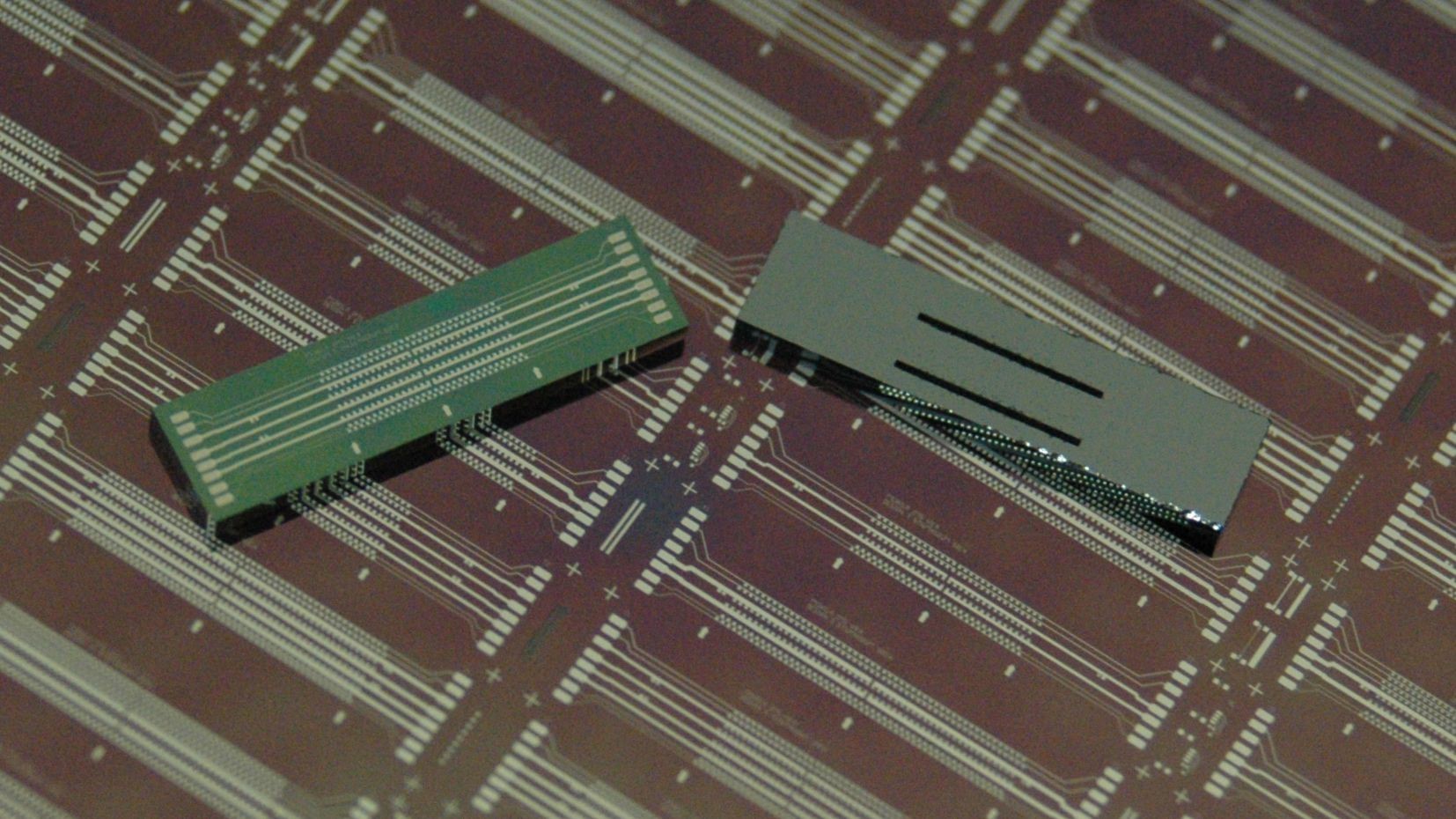Ion Mobility Spectrometer (IMS)

In the field of chemical sensors, Fraunhofer IPMS develops sensors for the detection of selected gases from the atmosphere.
In the fields of environmental as well as biomedical analytics, there is an enormous demand for mobile devices that can detect specific substances in the ppm to sub ppb concentration range. Typical substances are, for example, from the group of volatile organic components (VOCs) such as acetone or toluene, which are of great importance in marker recognition or pollutant detection, for example.
Fraunhofer IPMS is therefore developing a modular component for trace gas analysis that can be used with customers and cooperation partners for application-specific product developments. At the end of this continuing development chain, we see mobile devices that are used on a large scale by laypersons and deployed within diverse application scenarios.
At the heart of this module is a silicon chip that integrates an ion filter and ion detector and is designed as a component of an ion mobility spectrometer (IMS). This concept makes it possible to detect ionisable analyte substances in the smallest concentrations directly in air. The molecule-specific ion mobility is used for substance identification. The special combination of a special FAIMS filter technique and the microtechnologies available at Fraunhofer IPMS makes it possible to implement the filter methodology very effectively and very flexibly in terms of the application. The underlying unique concept of component, technology and system integration goes beyond existing solutions on the market and therefore promises to be able to address innovative solutions in the field of gas sensor technology in the future.
Conventional methods, such as gas chromatographs coupled with mass spectrometers, are mainly established in the field of laboratory analysis. On the one hand, these types of devices are highly accurate and measure very selectively, but on the other hand, they place enormous demands on device implementation and appropriately trained personnel. As a result of the costs and time involved, their use is limited to individual or random sample measurements. Another complicating factor is that the samples have to be collected on site and brought to the laboratory. This requires additional effort to avoid changes in sample composition as a result of the sampling system and sample transfers.
In contrast, a solution based on ion mobility spectrometry allows measurements directly on site, for example when checking for harmful emissions in critical locations or when assisting medical staff with diagnostics or treatment. In addition, access to MEMS technologies makes it possible to realise IMS chips in large quantities at low cost. This is an essential prerequisite for addressing high-volume applications with suitable systems.
We offer
- flexible adaotation of our device to your relevant analyte substances
- Adaptation of our AVT concept for the integration of our module component into your system
- Proof of feasibility and functionality
- Parameters
- Sensor materials: bulk Si
- Substances to be detected: organic solvents (benzene, acteon, ethanol)
- Harmfulness limits: 1 ppm (benzene), 250 ppm (acetone), 1000 ppm (ethanol)
- Detection limits of the sensors: ppb
- Operating temperatures: room temperature - 100°C
- Measuring principle: ion mobility spectrometry
Parameters
- Sensor materials: Bulk-Si
- Substances to be detected: organic solvents (benzene, acetone, ethanol)
- Harmfulness limits: 1 ppm (benzene), 250 ppm (acetone), 1000 ppm (ethanol)
- Detection limits of the sensors: ppb
- Operating temperatures: Room temperature - 100°C
- Measuring principle: Ion mobility spectrometry
 Fraunhofer Institute for Photonic Microsystems
Fraunhofer Institute for Photonic Microsystems